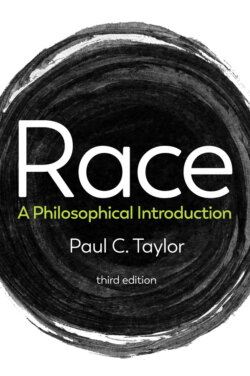Читать книгу Race - Paul C. Taylor - Страница 17
1.6.2 Bloodlines (ancestry)
ОглавлениеBy “bloodlines” I mean ancestry or heritage. I mean the causal antecedents of an organism that flow through the reproductive activities of other, sufficiently similar, organisms. This is what used to be called the “stock,” especially when it referred to some quality in a type of animals, or of humans, that breeders, or eugenicists, sought to cultivate by carefully monitoring reproduction.
Like phenomenal appearance, ancestry is also a rich repository of meaning. A distressing but important model for this in a study of race comes from animal husbandry. Breeders treat an animal’s bloodlines as resources for predicting its fitness and value. These breeding practices have provided a template for using ancestry in race-thinking, most obviously in the case of the institution of transatlantic chattel slavery.
That said, though, other ways of thinking about human ancestry are less distressing but equally relevant to our subject. For example, we use family histories as sources of information about our risks of developing certain diseases. In a similar way, contemporary societies tend to be constructed in ways that transmit certain risks and rewards, certain advantages and disadvantages, across the generations. Race-thinking might appeal to ancestry in this more diagnostic spirit. In addition, people track down lost relatives and plot out family trees to deepen their sense of what their lives are or ought to be about. The history of racial discourse is replete with appeals to this existential, ethical dimension of human ancestry. African American literature in particular offers many examples of people returning – “returning” – to their ancestral homeland in an attempt to fill in some missing part of their lives and identities.
